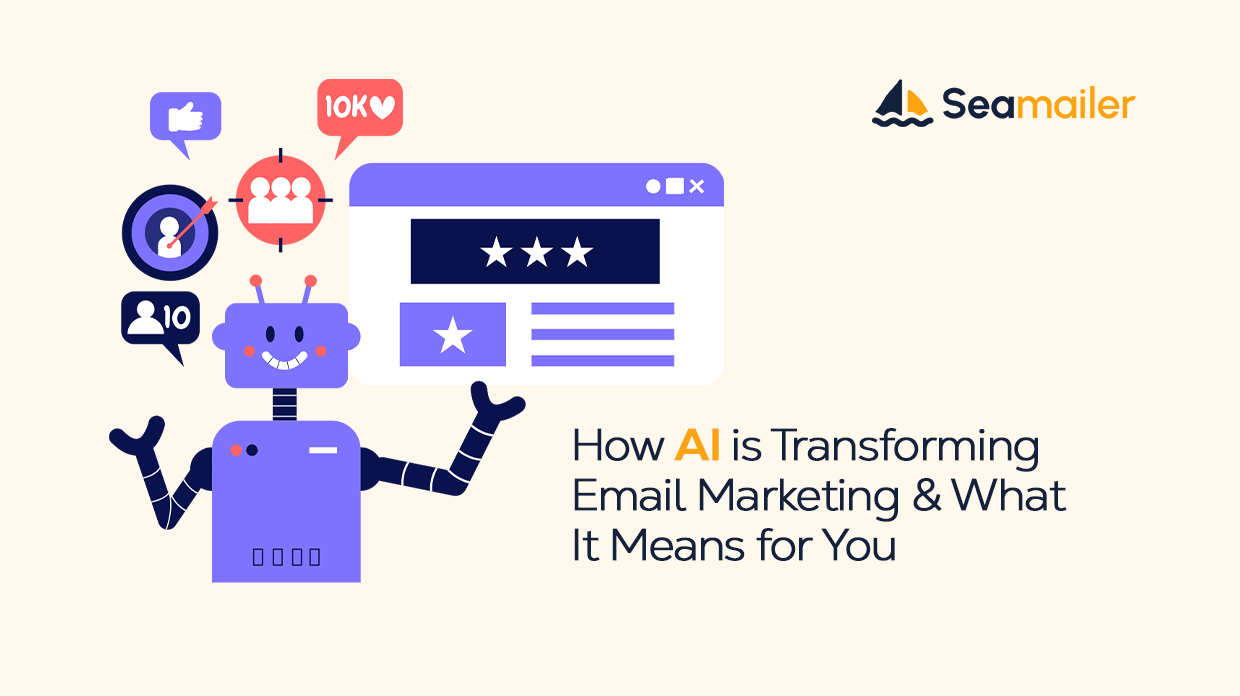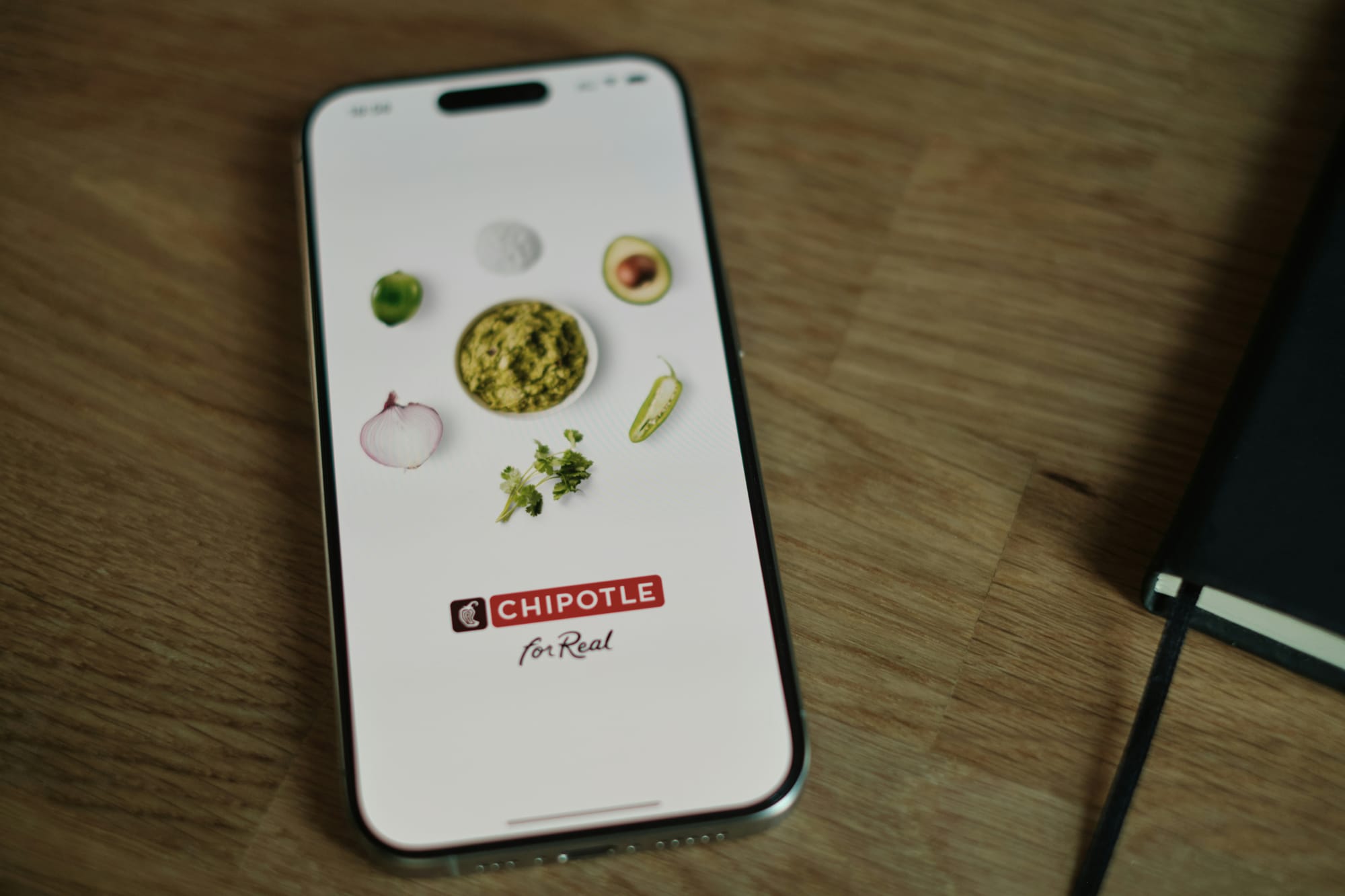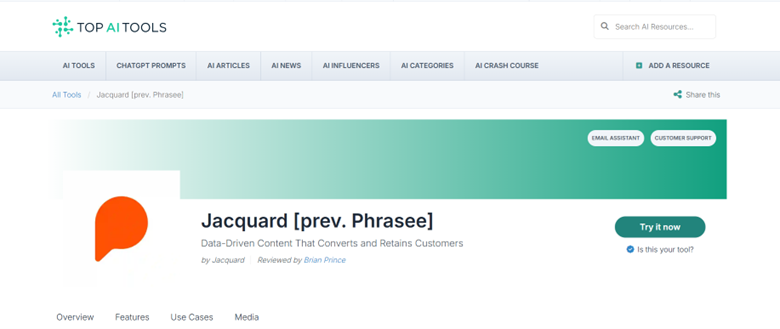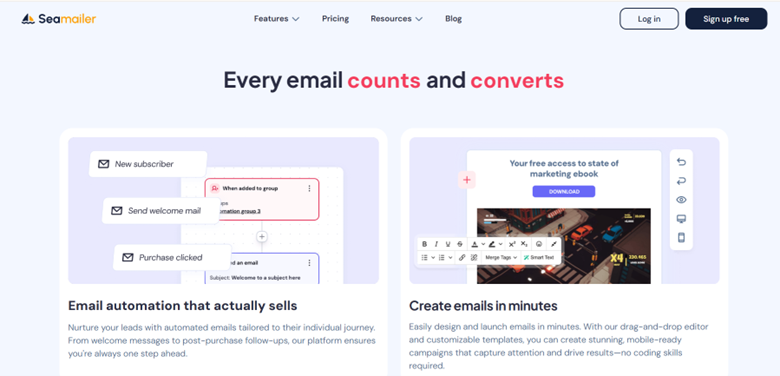How AI is Transforming Email Marketing & What It Means for You

If you’re like me, you’ve probably noticed how email marketing has changed dramatically over the years. What used to be about blasting newsletters to as many people as possible is now about delivering personalized, timely, and relevant messages that feel like they were written just for the recipient.
And the driving force behind this evolution? Artificial Intelligence (AI).
We’re living in a time where AI doesn’t just belong to sci-fi movies - it’s now at the heart of modern marketing. From predictive analytics to hyper-personalization, AI is changing the way businesses connect with customers through email.
In fact, according to Salesforce’s State of Marketing Report, 84% of marketers already use AI in some form, and those who do see significant boosts in engagement, efficiency, and ROI.
So, what does this mean for you as a business owner, marketer, or creator? Let’s break down exactly how AI is transforming email marketing - and what that means for the way you run your campaigns in 2025 and beyond.
1. Smarter Personalization (Beyond First Names)
Let’s be honest: seeing “Hi [First Name]” in an email isn’t that exciting anymore. Customers expect more.
AI allows us to take personalization to the next level by analyzing subscriber behavior, purchase history, browsing activity, and even predictive data to deliver emails that feel individually crafted.
For example:
- An online clothing store can send style recommendations based on what a subscriber browsed last week.
- A SaaS platform can predict when a user might be ready for an upgrade and nudge them at the right time.
- A food delivery app can use location and order history to suggest new restaurants nearby.
According to Epsilon, 80% of consumers are more likely to buy from a brand that offers personalized experiences.
What this means for you: Stop relying on generic campaigns. Start using AI-driven tools to segment customers more effectively and create personalized journeys that boost engagement and conversions.

2. Predictive Analytics: Sending the Right Message at the Right Time
One of the most powerful applications of AI is predictive analytics, which utilizes past data to forecast future behavior.
Think of it like this: instead of guessing when to send your next email, AI can analyze a subscriber’s activity and determine the perfect time and message for them.
For example:
- Predicting when a subscriber is most likely to open emails.
- Forecasting when someone might be ready to purchase again.
- Identifying at-risk customers who are about to churn so you can re-engage them.
Brands using predictive analytics report 22% higher conversion rates compared to those that don’t.
What this means for you: No more guessing games. AI helps you send the right message to the right person at the right time - maximizing your ROI.
3. AI-Powered Subject Lines and Copywriting
You’ve probably heard the phrase: “Your subject line is the gateway to your email.”
AI tools now generate and test subject line variations to see which ones drive higher open rates. For example, platforms like Phrasee or Jasper use natural language processing (NLP) to create compelling copy that resonates with different segments of your audience.
And it doesn’t stop at subject lines - AI can help craft body text, CTAs, and even tailor tone of voice to match your brand.
According to HubSpot, 47% of recipients open emails based on the subject line alone. With AI, you’re no longer relying on gut instinct - you’re leveraging data-driven creativity.
What this means for you: AI won’t replace your creativity, but it can enhance it. Think of AI as your co-writer, giving you data-backed options that you can refine and humanize.

4. Dynamic Content That Adapts in Real Time
Imagine opening an email and seeing content that changes depending on when you open it, where you are, or what you’ve done online.
That’s dynamic content - and AI makes it possible.
Examples include:
- A countdown timer showing hours left in a sale.
- Weather-based promotions (e.g., umbrellas in rainy regions, sunglasses in sunny ones).
- Inventory-based updates (“Only 3 items left in stock!”).
This creates a sense of urgency and relevance that static emails can’t match.
What this means for you: Instead of blasting the same email to everyone, let AI create dynamic experiences that adjust automatically for each subscriber.

5. Smarter Segmentation and Customer Journeys
Traditional segmentation grouped customers by broad categories like age, gender, or location. But in 2025, AI segmentation is far more advanced.
It can group subscribers by:
- Browsing behavior
- Purchase frequency
- Engagement levels
- Predicted lifetime value
This allows you to create automated customer journeys - from welcome sequences to post-purchase follow-ups - that feel natural and personalized.
What this means for you: Stop treating your list as one giant group. Use AI to create micro-segments and journeys that meet customers exactly where they are.
6. AI-Powered A/B Testing (Faster and Smarter)
Traditional A/B testing used to mean creating two versions of an email, sending them out, and then waiting days (sometimes weeks) to figure out which one worked better. That approach feels painfully slow in 2025.
AI speeds this up by automatically testing multiple variations in real time and then pushing the winning version to the rest of your audience.
With Seamailer’s AI-powered A/B testing, the process is instant and dynamic. Instead of testing just two subject lines or designs, Seamailer can automatically experiment with multiple variations in real time. The platform learns from subscriber behavior on the fly and quickly rolls out the best-performing version to the rest of your list—no waiting, no manual number-crunching.
This doesn’t just save you time—it ensures your subscribers are always seeing the most optimized version of your content. Whether it’s a subject line that sparks curiosity, a CTA button that drives clicks, or an offer that resonates best, Seamailer’s AI makes sure every email is working harder for your business.
What this means for you: You can say goodbye to guesswork and long testing cycles. With Seamailer, you’re not only improving engagement faster—you’re staying several steps ahead of your competitors.

7. Automating Customer Support Through Email
Another way AI is transforming email marketing is through AI-driven support integration.
Chatbots and AI assistants can now respond to customer emails instantly, answering FAQs, providing order updates, or escalating issues to human support when needed.
This creates a seamless experience for your subscribers and frees up your team to focus on higher-level tasks.
What this means for you: Faster responses build trust. Use AI automation to handle routine support while keeping the human touch for complex issues.
8. Enhanced Deliverability with AI Monitoring
Even the best email is useless if it lands in the spam folder.
AI tools now monitor your sender reputation, engagement patterns, and deliverability risks in real time. They can flag issues like:
- High bounce rates
- Spam trigger words
- Unhealthy list growth
By analyzing patterns, AI ensures your emails reach inboxes, not spam traps.
What this means for you: Deliverability is no longer a mystery - you’ll know exactly how to maintain a healthy reputation and keep your emails where they belong: in the inbox.
9. Advanced Analytics and Insights
Gone are the days of just tracking open and click rates. In 2025, AI analytics go deeper, showing you:
- Revenue per email sent
- Customer lifetime value
- Engagement by device, location, or behavior
- Predictive churn analysis
Instead of drowning in data, AI highlights the most actionable insights so you can focus on what matters.
What this means for you: You’ll spend less time staring at spreadsheets and more time making strategic decisions that grow your business.

10. Balancing Automation with Authenticity
Here’s something important: AI is powerful, but it can’t replace human connection.
Subscribers still crave authenticity. They want to know there’s a person (or a brand with real values) behind the emails they receive.
This means that while AI can generate subject lines, segment audiences, and automate workflows, your job is to add the human touch - the storytelling, brand voice, and empathy that no machine can replicate.
What this means for you: Use AI to handle the heavy lifting, but never lose sight of your brand’s unique personality. Think of AI as your assistant, not your replacement.
Conclusion
AI isn’t just changing email marketing - it’s redefining it.
From personalization and predictive analytics to smarter testing and dynamic content, AI allows businesses to deliver emails that are more relevant, timely, and impactful than ever before.
But here’s the key: AI is a tool, not a strategy. The real magic happens when you combine AI’s power with your creativity and authenticity.
If you embrace these changes, you’ll not only keep up with the future of email marketing - you’ll stay ahead of it.
Insider tip: Platforms like Seamailer now have AI built right in, giving small businesses and creators the same power big brands enjoy. Start simple—launch just one AI-driven campaign and see how much of a difference it makes.

